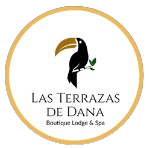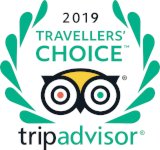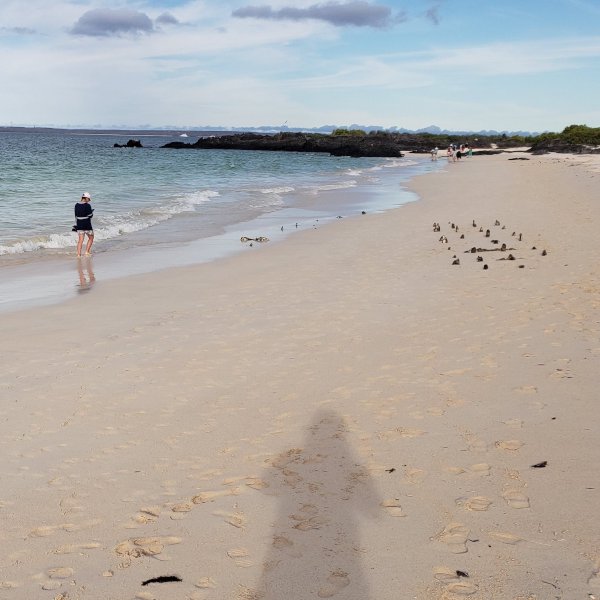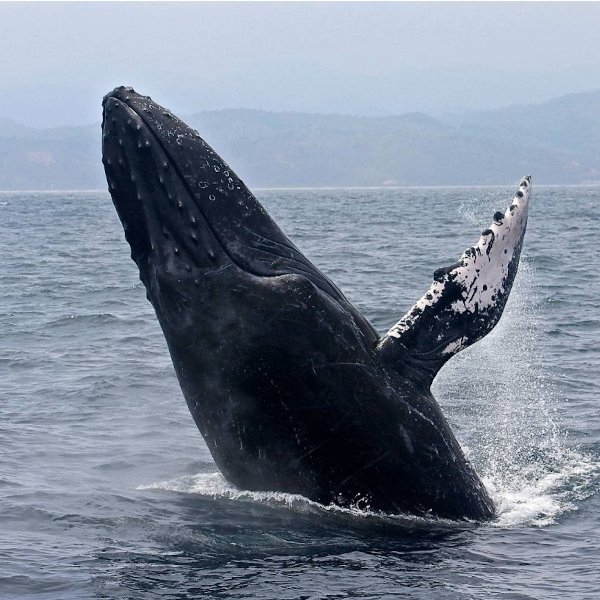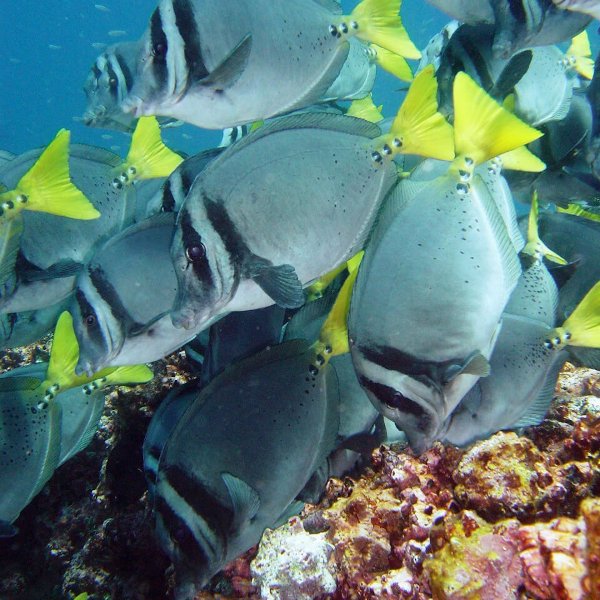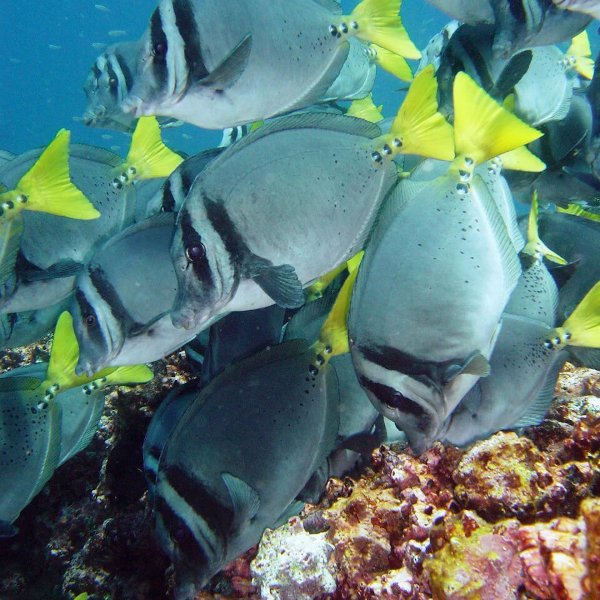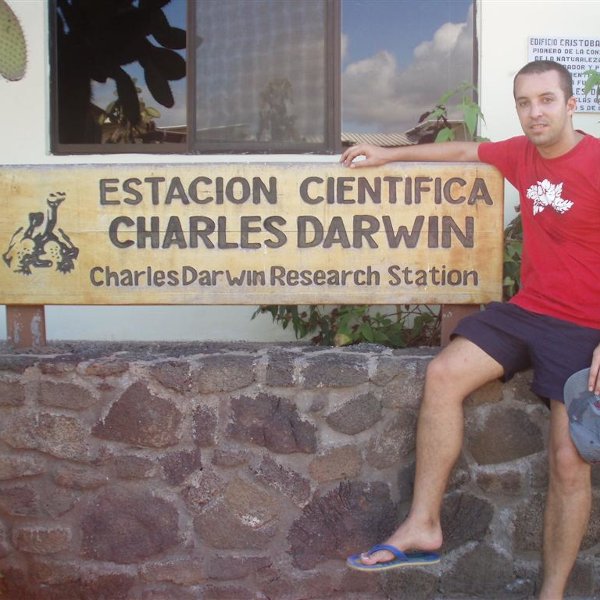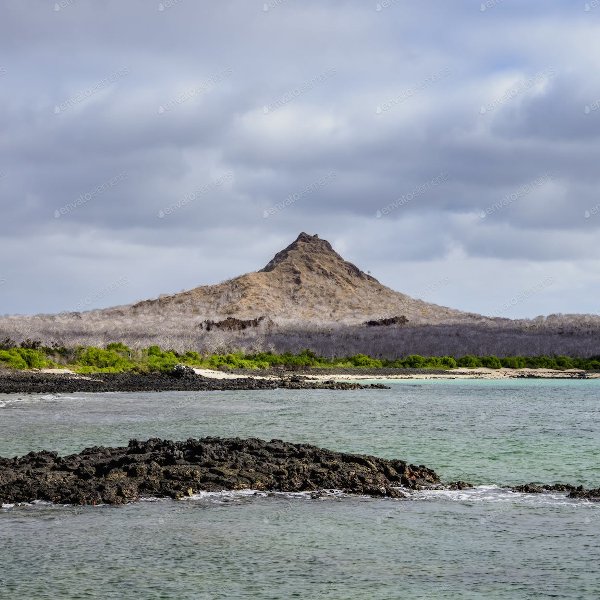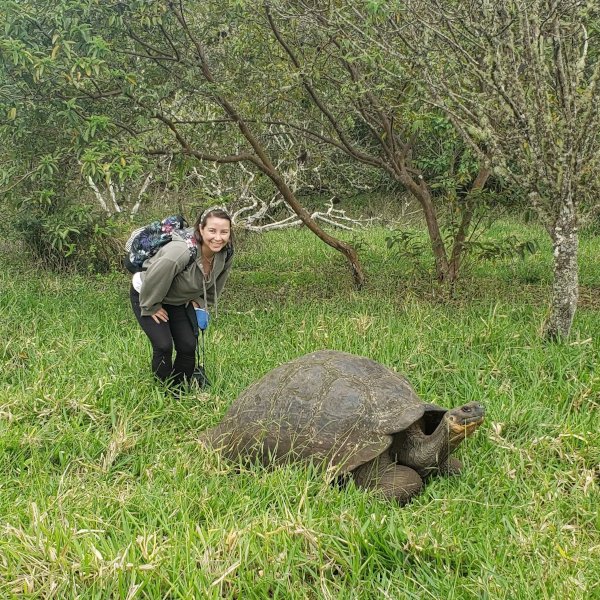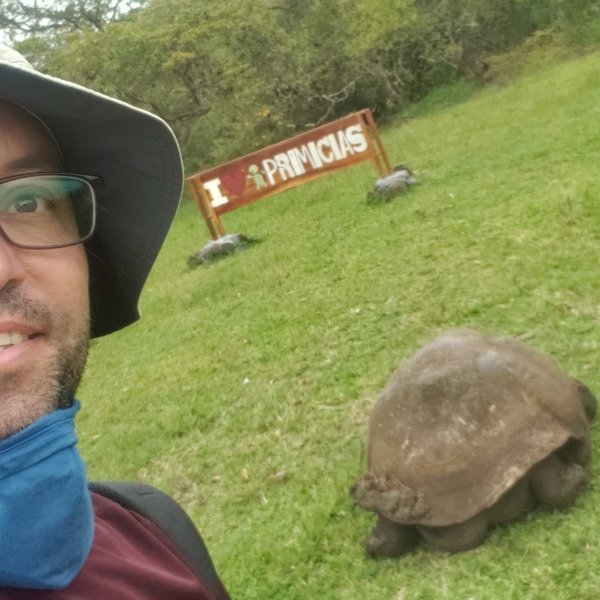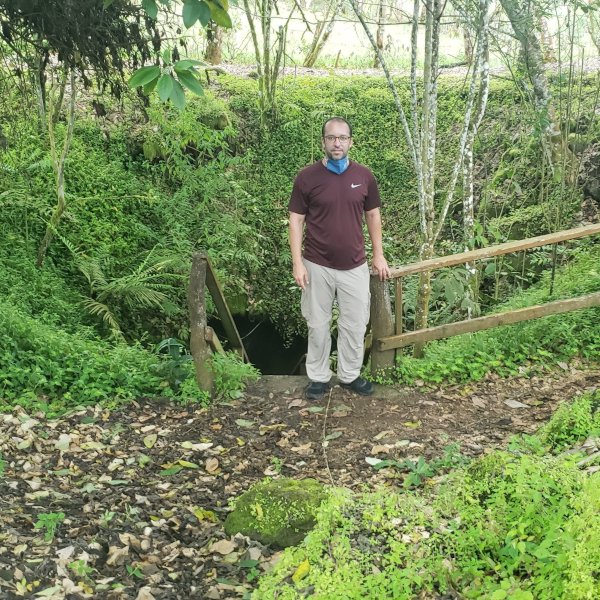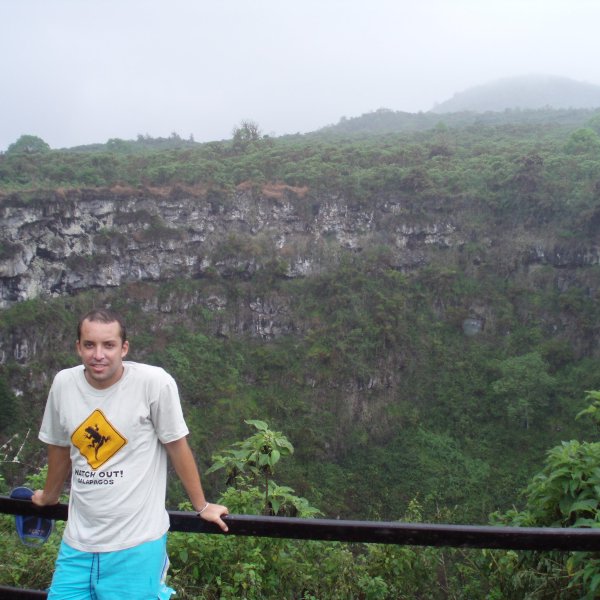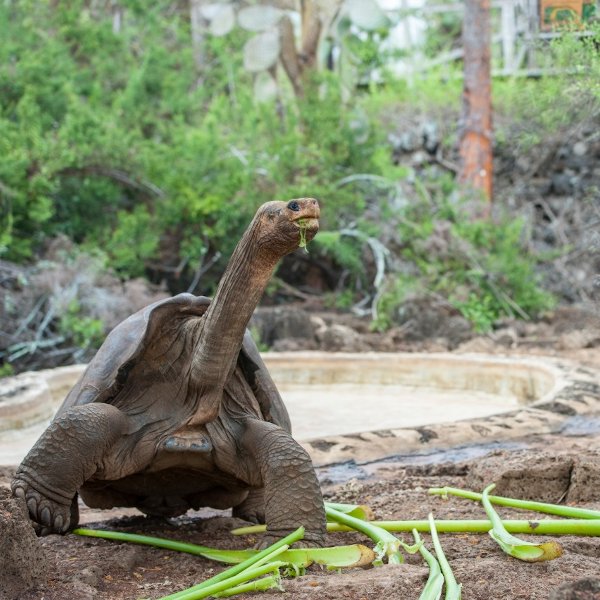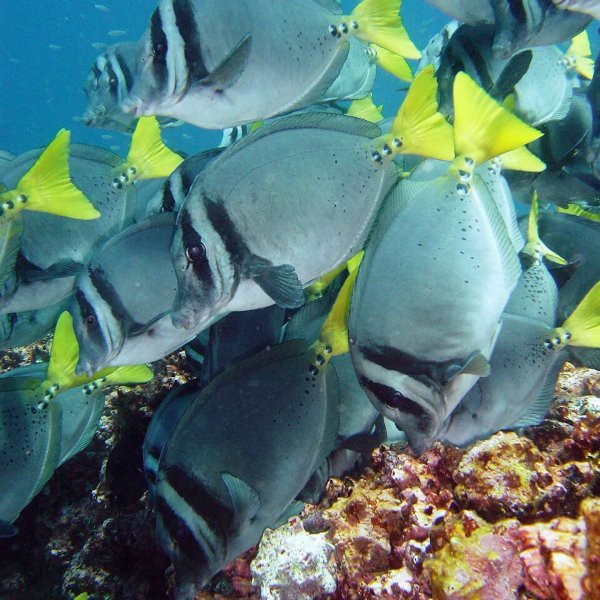Santa Cruz
The island's capital is Puerto Ayora, the most populated town in the islands. It is the urban center of Galapagos, with many coffee shops, restaurants, bars and souvenir shops.
Tortuga Bay is a white sand beach whose name comes from the black sea turtles that lay their eggs here, and it is considered one of the most beautiful beaches in the archipelago. Located southwest of the town of Puerto Ayora, there's a 1.55 mile trail you can follow to get to the beach. It is an excellent site for swimming, surfing and even birdwatching.
On the northeastern side of Santa Cruz Island, you can find Carrion Point or Punta Carrión, a naturally sheltered cove with clear and turquoise waters, perfect for snorkeling. You can see sea lions here, iguanas and, below the water, white-tip reef sharks and different species of rays.
On the island's northwest side you can hike on Cerro Dragón or Dragon Hill, that gets its name from the large population of iguanas that can be seen almost at every step, lazing in the sun. There's a trail that leads to the top of the hill and you'll have the chance to walk through different vegetation areas, including arid zones with various species of cacti and groves of trees. This is a great place for birdwatching as well, and at a saltwater lagoon nearby you can even see flamingos.
The lava tunnels on the island are an amazing visitor site, near Santa Rosa town. You can walk through empty tubes of lava, formed by the solidification of molten lava on the outside, while inside it kept flowing, leaving the series of empty tunnels. They spread approximately 1km, and they are an amazing insight into the geological history of the island. You can also spot barn owls here.
Visiting the Charles Darwin Station or Fausto Llerena Breeding Center is a must on your tour here. The station, founded in 1959, is the base for scientific research in the islands. You can learn here about the species of wildlife in Galapagos, about the breeding projects and the conservation work led for preserving the islands' natural habitats. You can also see tortoises here in different growth stages and, on display, the famous Lonesome George, the last Pinta Island giant tortoise, who died here in 2012 and whose remains where preserved.
El Chato Tortoise Reserve is a great place for admiring giant tortoises roaming free in the wild. Home to hundreds of specimens, the reserve features 12 hectares that provide a natural habitat for this amazing species. There are also some impressive lava tunnels here as well you can visit on your trip here.
Gordon's Rock is a marine site suitable for experienced divers, famous for the sightings of hammerhead sharks. Also called ""The Washing Machine"", it is located in a volcanic crater and it has strong currents. You can also encounter here turtles, white-tip sharks, Galapagos sharks, moray eels, manta rays and sting rays.
- Santa Cruz Island is the most populated island in Galapagos.
- Charles Darwin Station is the hub for scientific research in Galapags, where you can see the preserved remains of Lonesome George on display.
- The lava tunnels are empty tubes of lava you can visit and walk through.
American Oystercatcher, Blue-Footed Booby, Brown Pelican, Darwin’s Finches, Galapagos Barn Owl, Galapagos Dove, Galapagos Frigatebirds, Galapagos Giant Tortoise, Galapagos Green Turtle, Galapagos Hawk, Galapagos Land Iguana, Galapagos Lava Gull, Galapagos Lava Heron, Galapagos Lava Lizard, Galapagos Marine Iguana, Galapagos Mockingbird, Galapagos Petrel, Galapagos Racer Snake, Galapagos Rail, Galapagos Red Bat, Galapagos Sea Lion, Galapagos Sharks, Galapagos Shearwater, Galapagos Short-eared Owl, Galapagos Sting Rays, Great Blue Heron, Greater Flamingo, Mobula Rays, Nazca Booby, Sunfish, Vermilion Flycatcher, Whales & Dolphins, White-cheeked Pintail, Yellow-crowned Night Heron
Santa Cruz Visitor Sites:












Bird Photography Tour: Ecuador Andean Choco & East Slope
Scheduled Group Departure 2023
Max group: 6 photographers!
Price: $3,600 USD
per person sharing double room
* Single supplement: $720
Dates:
2023
Length: 12 Days
Start / End city: Quito
Pace: Easy
Physical difficulty: Easy
Focus: Bird photography
Max group size: 6 photographers

